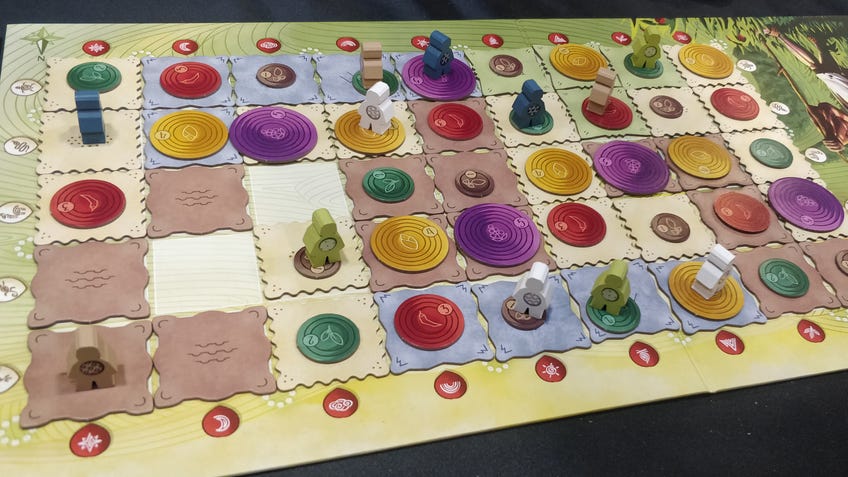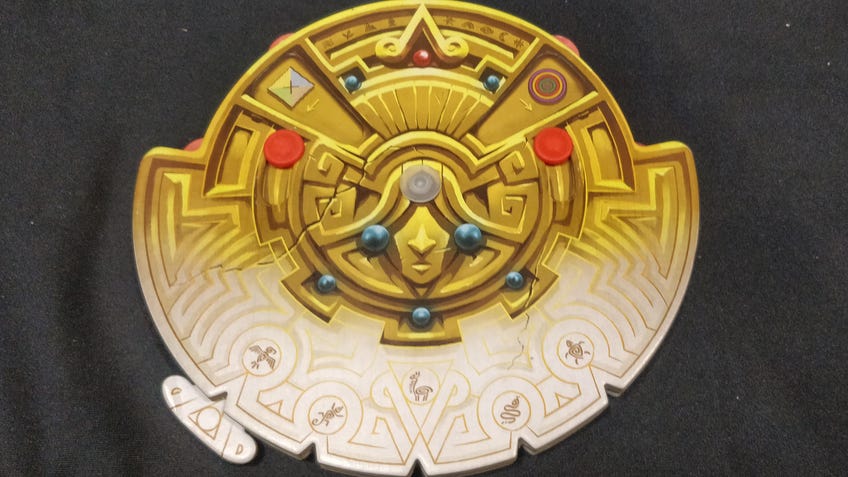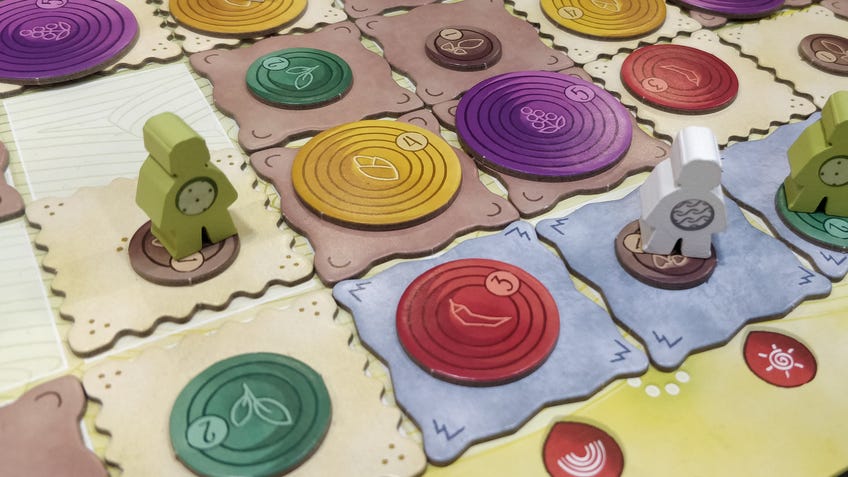Sudoku meets Minesweeper in nifty puzzle board game Tiwanaku - hands-on impressions
It’s definitely a grower.
Tiwanaku is a board game set in the pre-Columbian era of the Andes that combines elements of classic puzzle games like Sudoku and Minesweeper to make something fun, if not entirely new. Dicebreaker was able to play the recently released board game at the recent UK Games Expo.
In Tiwanaku, players take the role of tribal leaders who must take their people through the land in and around the Andes Mountain range, searching for places to settle down and begin farming for food. As followers of the ancient goddess Pachamama, the players will need to anticipate what kinds of crops she’ll want her people to plant and where she’ll want them to plant them.
Though Tiwanaku features some beautiful artwork and an interesting theme – inspired by a journey its designer, Olivier Grégoire, took through South America – it appears to be yet another case of a western European publisher releasing a board game based on a historically colonialised country, without (after checking through the rulebook and background) any obvious creative contribution or consultation from anyone from that culture. Certain companies seem to be especially guilty of applying themes inspired by cultures that they don’t employ anyone from. It’s particularly disappointing considering we want to see diverse settings in the industry, but only when they are treated with respect.

The actual gameplay of Tiwanaku sees players placing and moving their little meeples across a grid board. How this grid board is set up each playthrough depends on the randomised layout players have chosen, which is dictated by one of the 20 available scenario discs. Each scenario disc in Tiwanaku will feature a layout of terrain tiles and crop tokens that begin on the board, with the remaining information remaining a secret until it is revealed by the players during the game itself. Once the starting tiles and crop tokens have been placed, the players can begin.
Whenever a player moves a meeple onto a space that doesn’t contain a tile, they check the Pachamama wheel to see what kind of terrain needs to be in that space. They do this by turning the top and bottom wheels until they each match the symbols shown on the X and Y axis of the space their meeple is placed on. They then turn the switch for the tile reveal part of the Pachamama wheel to see what kind of terrain should be placed in that space. There are four terrain types, with the number of available tiles varying depending on the chosen scenario.
With the potential stakes raised players will need to think more carefully about their options.
Whenever a player places a terrain tile, they move the token matching their colour up a space on the corresponding terrain column on the scoreboard. Players only score points when they move a token onto a row containing another of their tokens, incentivising discovering tiles of different terrain types. Players can predict which tiles could be where by observing the tiles adjacent to a space – while the shape of runs/groups of matching tiles will vary, they cannot contain more than five of the same terrain type.
Herein lies Tiwanaku’s biggest and best gameplay mechanic: using patterns and process of elimination to predict what goes where. Whereas predicting terrain types can only lead to a positive outcome – points – with no negative, predicting crop types is another matter. Whenever a player has a meeple on a terrain tile, they can attempt to predict the type of crop that may be destined for that particular tile. Runs/groups of matching terrain tiles can only hold one of each crop type, similar to the number blocks in Sudoku. Furthermore, crops cannot be adjacent to crops of the same type. Both of these pieces of information are vital to successfully predicting what crop type will be on which tile.
Tiwanaku works thanks to its focus on a small number of complex core mechanics.
Whenever a player wants to predict a crop type, they use the Pachamama wheel in a similar fashion to when you reveal a terrain tile, but this type sliding the window open to reveal the crop type for the space. Whilst successful predictions will net players points depending on the crop type – which are numbered from one to five – incorrect predictions will minus points from their total. In a similar fashion to Minesweeper, with the potential stakes raised players will need to think more carefully about their options, using all the information available to them to pick the right space to predict at the right time.

If players have multiple meeples on multiple tiles containing no crops, they’ll be able to make more than one prediction – if they want to take the risk. Of course, other players will be moving their meeples across the board towards the empty tiles with the more obvious answers, forcing you to balance the safety of a prediction with the likelihood of another player getting there first. This is easily where Tiwanaku is at its best, with everyone racing their meeples around the board in a dash to grab the last remaining crop points. Players can also exchange their collected crop tokens for additional points, with players only able to cash in one of each type of crop at a time but being rewarded for cashing in more at once.
Tiwanaku works thanks to its focus on a small number of complex core mechanics. Though it’s a little confusing at first, once you get to grips with its gameplay it quickly becomes a puzzle board game that doesn’t do anything especially unique, but presents it in such a fun way – with its interactive wheel and push-your-luck mechanics – that it doesn’t really matter.

